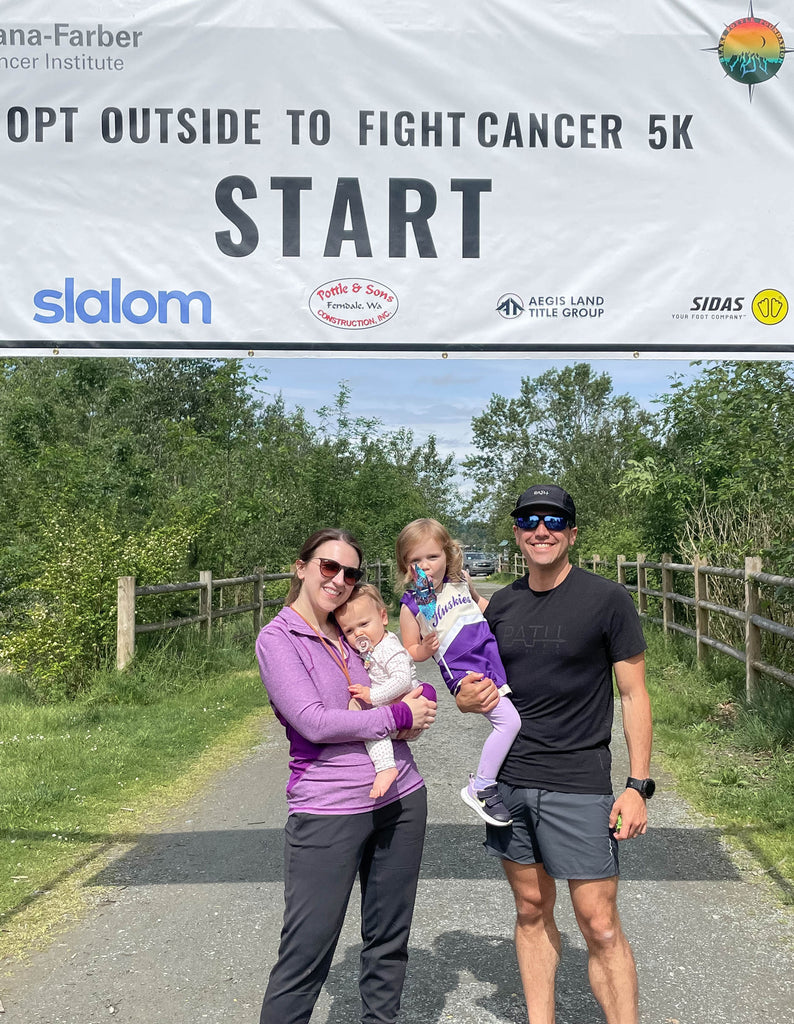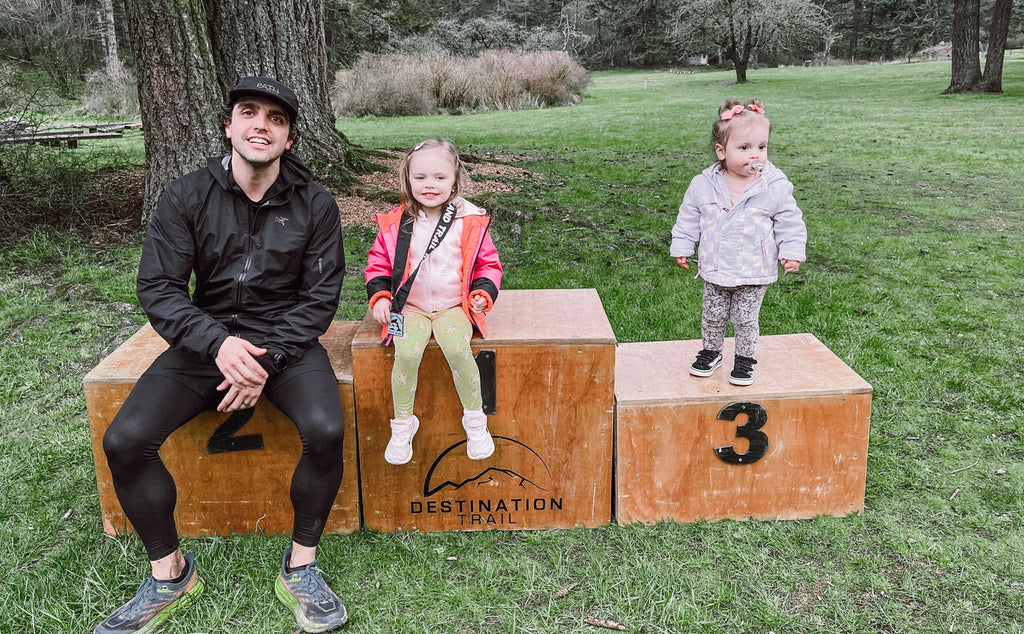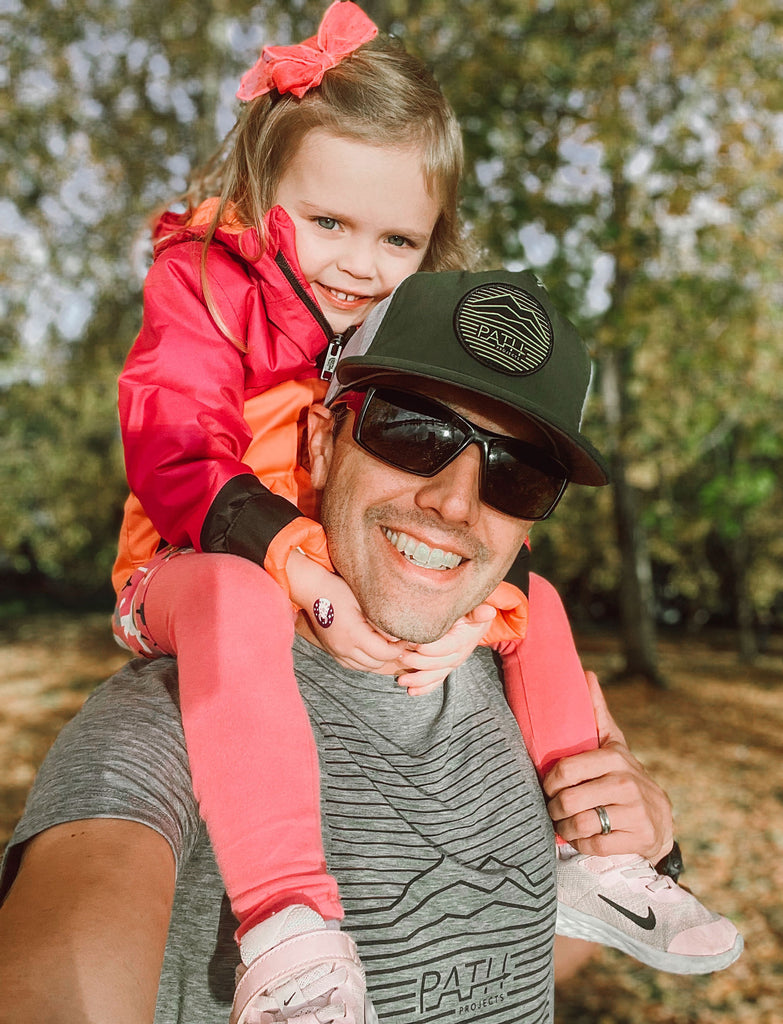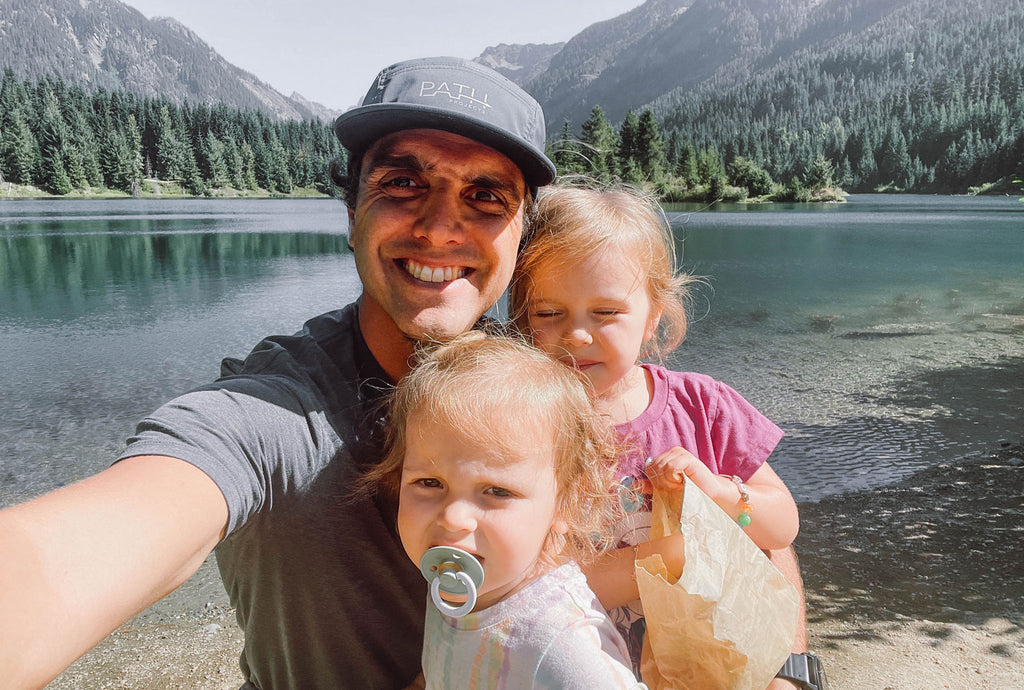Written by Kalani Garces

It was August 19, 2023, roughly one month after completing Cascade Crest 100. I stand over a hot stove preparing a delicious quesadilla for my energetic four and two-year-old daughters. From the living room, I hear the voice of Carl Gammons, Executive Director and Vice President of the HURT 100, calling out the names of the 2024 HURT 100 race participants via a YouTube livestream. I registered for the race a month earlier, knowing the chances of getting selected were low, like sub 15%. I figured, "I'll get selected for 2025," plenty of time to get buyoff from the family and develop a training plan around my work schedule.
My attention was split between the kids playing and Karl's voice. Out of nowhere, I heard, "Number 1254, Kalani Garces." I looked towards the TV, and sure enough, my ticket was pulled. There was a moment of disbelief and immense happiness, followed by fear and doubt, considering this race has the reputation to grind you down to a pulp; where's the aloha in that? After gathering myself a bit, reality settled in and tempered my excitement. Call it a bittersweet moment when I realized the challenge ahead isn't the ramp-up in miles and time on feet over the next five months. Nor are the 3:30 AM alarms for repeats up Mailbox on Saturday and Sunday mornings. The biggest challenge (for me) will be creating a flexible training schedule that minimally impacts time with family and work. Not an easy balancing act, and it requires incredible self-control, sacrifice, and commitment. For that reason, I'd like to share the process my family and I go through to prepare (over months) from training to race day.
What's Your Why?

There are no rules to determine a "why"; as I process through my past races, I find each "why" different. At first, they were more along the lines of, "I just wanna finish." But now they have evolved into deeper, more meaningful reasons. My mother is Hawaiian, so for me, the HURT 100 will be my way of paying respect to her side of the family. Growing up, my mom (directly influenced by her parents) taught me focus, dedication, and grit. I'll probably need more than that to finish HURT, but it's a start. As I mentioned before, it doesn't need to be a fancy "why," but there really should be one. I promise the pain cave can be a pretty lonely place without that "why."
Family: Shared Sacrifice, Share Commitment

Humble Yourself and Set Your Goal

I've been running for roughly ten years, tackling distances from 5k to 100 miles. As of today, there is no chance I'll ever be elite, not even MidPack Elite (shout out to Wes Plate's top 10 finish at Oregon 200!!). During any race, you'll find me toeing the back of the pack, and it took some time for me to accept that. Trust me, I am competitive and dream of a podium finish, but training for that level of performance is a sacrifice I choose not to commit to. Here's why: the more time away from my family, the more work I put on my wife to solo parent. More solo parenting means an increase in stress on the whole family. Walking into a stressed home life (especially after a long running day) creates a non-conducive home culture, a literal no-win for anyone. So, how do you balance training vs. family and work?
First and foremost, I establish a high-level goal and then break that goal down into mini-goals. For example, I'd like to run 2,000 miles yearly (my main goal). In order to do that, I'll need to run 167 miles a month, roughly 41 miles a week, which is approximately 6 miles a day. Breaking your big goal down into smaller bites makes the journey to success a bit less daunting. Knowing the daily mileage, I then examine my calendar. Do I have roughly one hour to run (this hour includes pre and post-run prep) a day? And does this hour interfere with any family or work commitments? Most of my training time is spent in the wee hours of the morning or while my kids are at daycare. I chose these hours as they minimally impact family and work time. Obviously, it's not the same in every household, the point being, do your best to determine the appropriate time in your day, clear it with the family members, and LOCK IT IN (aka put it on your calendar). The calendar, for me, is a simple reminder of my commitment.
Train and Race Within Your Limitations

In June 2023, two months prior to running The Cascade Crest 100, I found myself in the emergency room at the University of Washington Urgent Care. A few hours earlier, I was hammering (the adjective here is relative) down an 11-mile tempo run, doing my best to ignore an annoying pain in my chest. As I slowed my pace to recover, I noticed the pain remained constant, which was enough for me to trigger a call to my medical provider. Their recommendation was to visit the ER, mainly as a precaution. As soon as I checked in at the hospital, I was immediately admitted and placed on a bed in the hallway. A doctor stopped to get my vitals and drew some blood. After a while, my test results were ready for review, 100% normal, with no indication of a heart attack. Internally, I was like, well, that was easy enough. Now, back to training.
The doctor had other plans; as one final precaution, he scheduled a physical stress test. Certainly not a problem, so I stood waiting for directions to the nearest treadmill. I was informed that the test was scheduled for two weeks out, with no other options available. My disappointment was clear: I was supposed to run Wy'East Howl 50 Miler that Saturday. A final big day before Cascade Crest. Now, nada for two more weeks. I was devastated, to say the least, but I understood the purpose of this physical test and quickly became thankful that my body was ok, not only for me but for my family. I was limited to walking and light lifting. So, I did that every day for two weeks. I walked when I was supposed to run and added some body-weight squats. I passed the stress test two weeks later with no issues. It was physically and emotionally hard to limit myself to walking. The potential to do greater harm capped those feelings quickly. All that said, I take a super conservative approach with my body relative to training—listening carefully to the feedback of achy, stiff cries from my legs even after short runs. Which is an issue I have become more familiar with as I age (currently 42). I'll continue to leverage training to increase my physical over time, hopefully a lifetime.Brick by Brick

By the time I start the execution of my training plan, I've checked off three critical milestones. First off, I have determined my "why." Second, my family and I have agreed and committed to training and a race plan. Third, I have established and documented my overall goal and the road to achieving success (mini-goals). I now confidently step into my training schedule, knowing that every day, I am physically and emotionally supported to master the challenges I have set out in front of me.
My mantra, "Brick by Brick," is a way of paying respects to the training process. A head nod to the culmination of daily runs/workouts all stacked together nicely until race day. As I mentioned earlier, if your goal was 2,000 miles a year, then each brick, at a minimum, would equal 6 miles. Every day you grind, you add another brick to your goal. Over time, the pile of bricks will stack itself into whatever you designed it to be. For me, each brick is a reminder of my commitment to lifelong health and the outward promotion of the benefits of exercise for all.
What are you using your bricks for?







1 commento
We are able to accomplish so much with determination and a bit of extra no sleep, right? I do push my physical abilities to able fit my runs and this is my little mental space that it has become essential.
My running journey started almost around the same time like yours, initiated with a road half marathon and over the years various distance, being my longer race a 100km in 2015, now more accustomed to mid range distance. I like the challenge, no matter is a road marathon or maybe an ultra.
As long as my wife not complain much and I can handle the rest of the things, all good.
Your are a good model for your kids and I hope my daughters (6 years old twins) can find that inspiration from me too. At least one of them already said she wants to go for a run with me (looking forward to it) so gonna start bit by bit :)
Cheers,